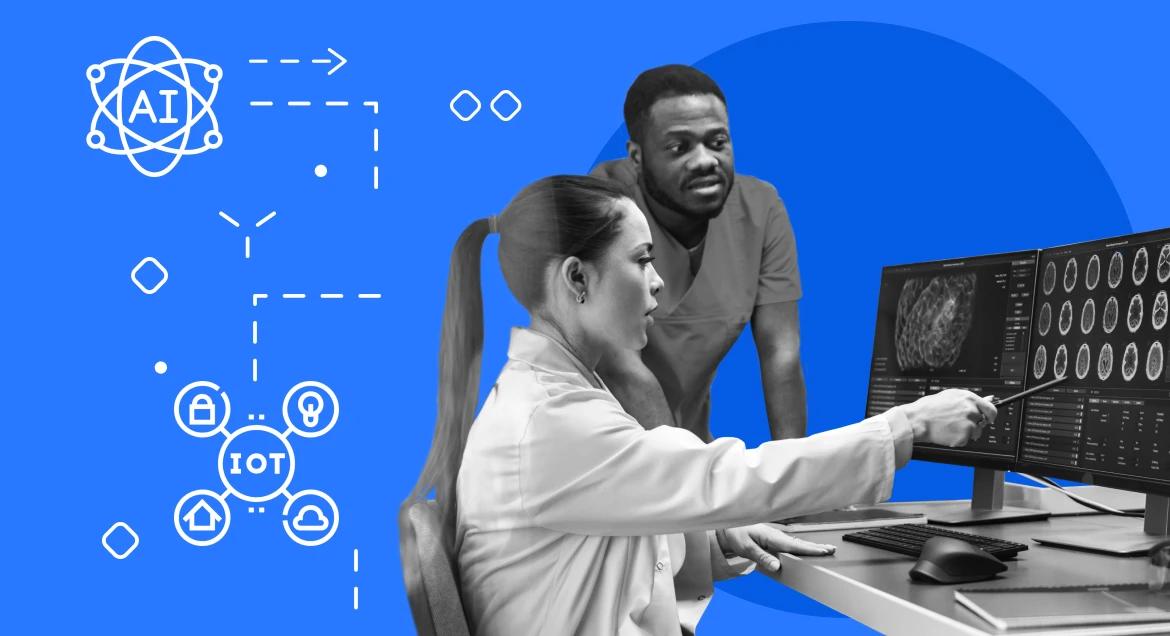AIoT is a fusion of Artificial Intelligence (AI) and the Internet of Things (IoT) that integrates the learning capacities of AI with the technical capacity of IoT devices. AI in IoT is a powerful force revolutionizing a number of industries, including healthcare.
In this article, we will talk about AIoT applications, real-life use cases, benefits, and challenges.
The relationship between AI and IoT
IoT with AI is used in many industries, from electrical infrastructure and smart cities to smart homes and manufacturing. While IoT focuses on devices connecting and communicating through the internet, AI empowers IOT devices to learn and evolve from their data and experiences.
IoT devices generate massive amounts of data. AI algorithms can analyze and make sense of this data, extracting patterns. With the help of AI, IoT devices can make real-time decisions without human intervention.
One common AI and IoT example is a smart thermostat that can adjust the room temperature based on the inhabitants' preferences and current environmental conditions. AI-driven insights can personalize user experiences and optimize operations. They are also increasingly being used to improve security.
In 2023, AIoT is a market worth $9 billion, growing at 20% CAGP. It is expected to reach $25 billion in 2032. The manufacturing industry and the adoption of AIoT devices for real-life decision-making drive the market.

How does AIoT work?
Artificial intelligence of things can work as either cloud-based or edge-based systems. If it is cloud-based, it consists of a device layer of hardware, a connectivity layer, a cloud for storage and processing, and a user interface, such as an app.
In the case of edge artificial intelligence of things, the data is processed directly on the hardware, which is a collection terminal layer. It is then sent to an edge layer for data storage and processing.
8 advantages of AI-Enabled IoT
AI in IoT has plenty of advantages. Let's consider the most important ones.
- Boosting operational efficiency: AI and IoT work together to optimize routine tasks. A combination of AI and IoT can also offer insight into the redundant tasks and the ones that can be optimized for better efficiency. For instance, in manufacturing, sensors can monitor production lines and maximize machine performance.
- Improving risk management: IoT with AI can predict all sorts of risks for the business, including financial risks and risks to employee safety. AIoT can detect fraudulent transactions by analyzing transaction patterns and flagging anomalies in finance. As a result, costs can be saved.
- Creating and improving products and services: AI and IoT work together to create innovative products that offer more value to the end-users. These products can adapt, learn, and provide personalized experiences. A good example would be the product that started from something simple and straightforward and evolved beyond its original capabilities. Smart home assistants like Amazon's Alexa started as simple voice-activated internet search tools. However, they can learn from user preferences and routines, integrate with other IoT devices, and detect security risks.
- Increasing IoT scalability: AI for IoT is even helpful in solving IoT own issues. As the number of connected devices grows, managing and coordinating them becomes increasingly complex. AI creates algorithms to maintain the network of IoT devices. For example, a smart grid utilizes IoT sensors across various parts of the electrical network from generation to consumption.
- Eliminating costly unplanned downtime: Unplanned downtime is a big issue for all sorts of businesses, and is one of the easiest ways to lose money. AI-enabled IoT devices can predict when components are likely to fail, so maintenance and repairs will actually be on time. For example, sensors in a power plant might monitor equipment health, and AI can analyze this data to schedule maintenance before a critical failure occurs.
Benefits of AI-Enabled IoT in Healthcare
Now, let's focus in more detail on the specific benefits of IoT and AI in healthcare.
- Diagnostic assistance: AIoT in healthcare can help improve the diagnostic process. For instance, AI-driven systems can scan X-rays, MRIs, or CT scans to detect signs of tumors with high accuracy rates.
- Treatment enhancement: AI can analyze data from IoT devices and medical records to suggest tailored treatment plans. AI in IoT healthcare also improves the delivery of drugs; think of IoT-enabled insulin pumps for diabetics as an example.
- Predictive analytics in hospitals: By analyzing data from various IoT devices in hospitals, AI can predict patient deterioration, optimize bed occupancy rates, and reduce wait times. All of these changes can help improve the hospitalization experience for the patient.
18 use cases of AI and IoT working together
In this section, let's focus on AI and IoT use cases and real-life examples of AIoT in healthcare. Here are the notable examples in specific categories:
1. Autonomous driving:
- Use case: Self-driving vehicles use IoT sensors (like LIDAR, cameras, and radar) to gather real-time data about their environment. AI processes this data to make driving decisions, detect obstacles, and navigate routes.
- Example: Tesla's Autopilot system employs numerous sensors and AI algorithms to provide semi-autonomous driving capabilities (Source ).
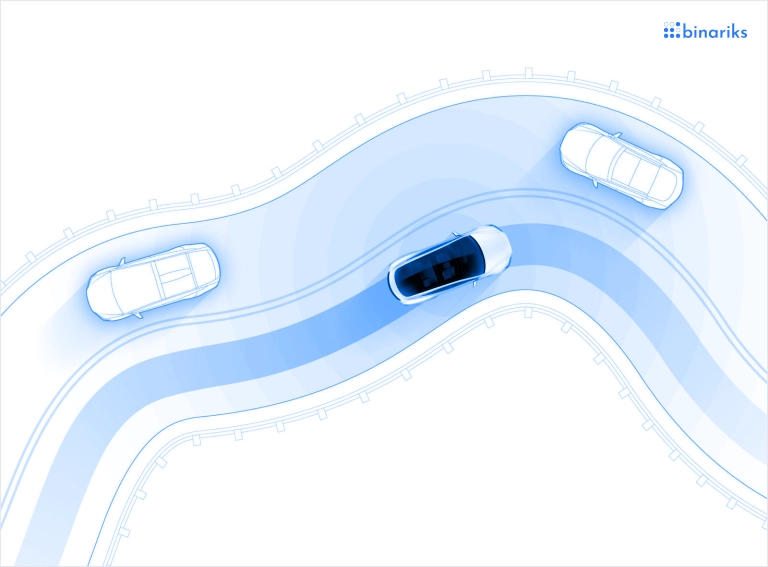
2. Optical inspection:
- Use case: Manufacturers use high-resolution cameras (IoT devices) to capture images of products. AI algorithms then analyze these images to detect defects or quality issues.
- Example: Darkfield Technologies system provides AI-powered optical inspection to detect defects in manufacturing processes, particularly in the semiconductor industry (Source ).
3. Cybersecurity:
- Use case: IoT devices collect real-time network and device data. AI analyzes this data to detect unusual patterns or behaviors and indicate potential security breaches or threats.
- Example: Darktrace uses AI to detect and respond to cyber threats in real-time, safeguarding IoT infrastructures (Source ).
4. Proactive healthcare:
- Use case: Wearables monitor vital signs and other health metrics. AI analyzes this data to predict potential health issues before they become critical.
- Example: Fitbit devices, combined with AI algorithms, can detect irregular heart rhythms, potentially alerting users to conditions like atrial fibrillation (Source ).
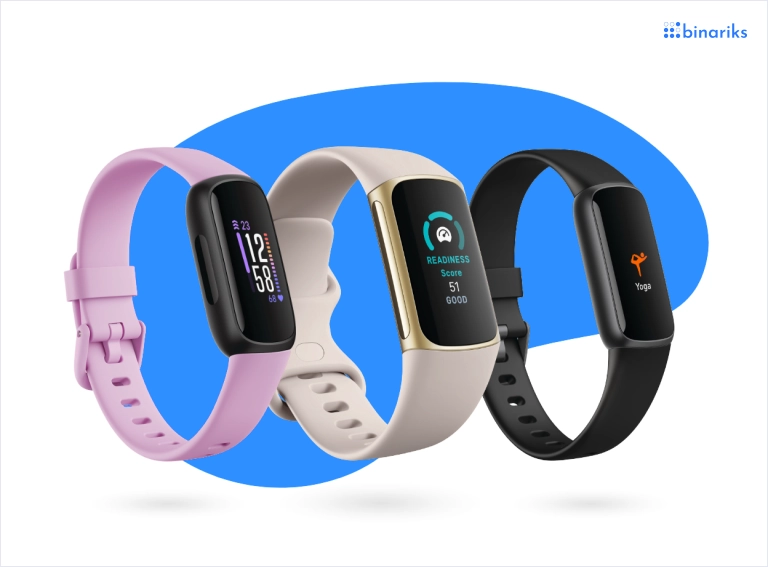
5. Body trackers:
- Use case: IoT-enabled wearable devices track body metrics, from posture to activity levels. AI processes this data to provide feedback and recommendations.
- Example: WHOOP Strap offers insights into recovery, strain, and sleep by continuously tracking and processing physiological data with AI (Source ).
6. Video surveillance:
- Use case: Surveillance cameras (IoT devices) continuously monitor environments. AI can process this footage in real-time and detect unusual activities. It can also recognize faces and identify objects.
- Example: NVIDIA's Metropolis platform uses AI to analyze video streams for safety and traffic management in smart cities (Source ).
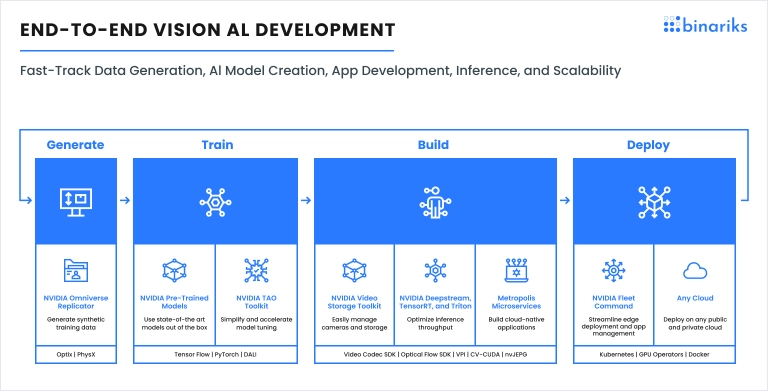
7. Inventory management:
- Use case: IoT sensors monitor stock levels, warehouse conditions or track items in real time. AI algorithms predict when stock replenishment is needed or optimize storage conditions.
- Example: Zebra SmartLens for Retail uses sensors and AI to automatically track inventory, ensuring shelves are stocked and identifying misplaced items (Source ).
8. Predictive maintenance:
- Use case: Sensors on machinery or infrastructure monitor wear, temperature, vibration, etc. AI algorithms predict when maintenance is needed, preventing costly breakdowns.
- Example: Siemens uses AI and IoT in its MindSphere platform to predict machinery maintenance needs, optimizing production and minimizing downtime (Source ).
9. Remote patient monitoring :
- Use case: Patients with chronic diseases like diabetes or cardiovascular conditions are provided with wearable devices that monitor glucose levels or heart rate metrics. AI analyzes the data to detect irregularities and alerts the patient and their healthcare provider.
- Example: Devices like the Dexcom G6 monitor glucose levels in real time and send data to smartphones for timely interventions (Source ).
10. Smart inhalers:
- Use case: Inhalers equipped with sensors track usage and ensure that patients with asthma adhere to their medication schedules. AI analysis can also identify environmental triggers.
- Example: Propeller Health has developed a smart inhaler that tracks usage and provides patient feedback (Source ).
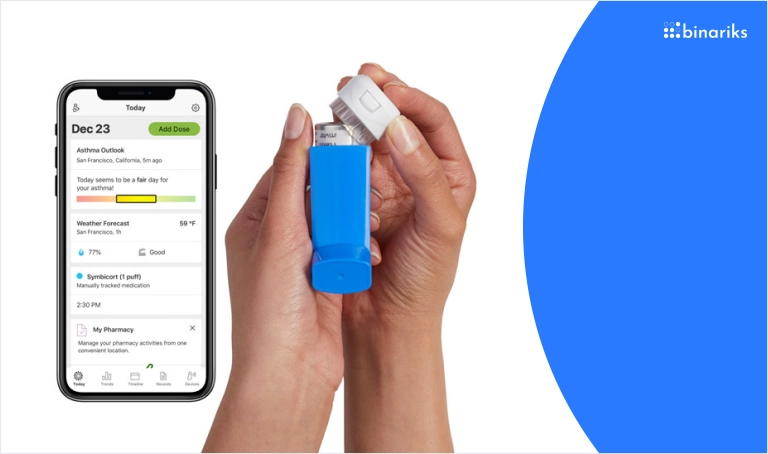
11. Stroke prediction:
- Use case: Wearable devices that monitor a patient's vital signs, combined with AI algorithms, can predict the likelihood of a stroke based on detected anomalies.
- Example: Current Health's wearable device offers continuous, real-time patient monitoring, which can be used to anticipate strokes (Source ).
12. AI-enhanced imaging:
- Use case: Radiologists use AI algorithms to detect anomalies in imaging scans that might be difficult for the human eye to catch.
- Example: Zebra Medical Vision uses AI to read medical images, helping radiologists spot diseases like cancer earlier and more accurately (Source ).
13. Smart beds:
- Use case: Hospital beds equipped with sensors can detect occupancy, patient movement, and vital signs, notifying nursing staff if a patient is distressed or has an unanticipated bed vacancy.
- Example: Hill-Rom's Centrella Smart+ bed has integrated sensors to monitor patients and improve care (Source ).
14. Medication adherence monitoring:
- Use case: Smart pill bottles or ingestible sensors can monitor whether patients are taking their medications as prescribed.
- Example: Proteus Discover consists of ingestible sensors, a patch, and a mobile application to monitor medication adherence and patient health (Source ).
15. Virtual health assistants:
- Use case: Patients can interact with AI-powered virtual assistants for medication reminders, health inquiries, or initial diagnostic consultations.
- Example: Babylon Health offers a chatbot that provides medical consultation based on personal medical information and a user's medical history (Source ).
16. Automated insulin delivery:
- Use case: For people with diabetes, wearable insulin pumps can detect blood sugar levels and deliver appropriate insulin doses automatically.
- Example: The MiniMed system from Medtronic provides an integrated insulin pump and glucose monitoring system that can adjust insulin delivery based on real-time needs (Source ).
17. Early detection systems:
- Use case: Wearable devices combined with AI can predict potential health issues such as heart attacks or seizures by analyzing physiological data.
- Example: The Embrace2 watch from Empatica can detect and alert for seizures in real-time (Source ).
18. Hospital asset tracking:
- Use case: Hospitals use IoT sensors to track the location and status of medical equipment. AI algorithms then optimize the allocation and maintenance schedules for these assets.
- Example: The company AiRISTA Flow has a technology to track and manage hospital assets, enhancing efficiency and patient care (Source ).
Possible challenges & future
If you are certain about using a combination of AI and IoT for your business, here are some challenges you may run into:
- Lack of clear goals: Jumping into AIoT without a defined aim can lead to unanticipated costs and unhappy stakeholders. It is better to begin with a discovery phase to align ideas with business objectives and customer needs.
- Implementation strategy: Picking the right solution (cloud, edge, or hybrid)is vital. For time-sensitive systems with numerous devices, edge deployments are preferable. However, the cloud is suitable if latency and bandwidth aren't major concerns.
- Long deployment cycles: AIoT initiatives demand long-term investment. Given the rapid tech evolution, solutions can become obsolete before they're fully functional. Businesses should remain adaptable to integrate changes over time.
- Insufficient data for AI training: Reliable AI insights require vast training data. In its absence, alternate strategies might be necessary, like transfer learning or data augmentation.
- Security vulnerabilities: Overlooking the security aspect can doom many AIoT projects. For sensitive data, hybrid deployments, where data processing is closer to the source, might reduce potential security risks.
The future of AI for IoT is promising, with the most optimistic predictions of AIoT applications sounding like science fiction turning real. One thing is sure: personalization will continue, and AIoT will likely lead to services and devices highly tailored to individual preferences and behaviors.
Many industries will reach the point of stronger automatization merging on a total one. This includes manufacturing, agriculture, retail energy, and transportation. AIoT at Home, the smart home of the future that attests to all the needs of its inhabitants, is close to becoming a reality.
As for IoT and AI in healthcare, AIoT will likely enable more predictive and preventive healthcare solutions. Smart hospitals will become the norm, and drug development will become more advanced. In light of events like the COVID-19 pandemic, AIoT will play a crucial role in early detection, tracking, and management of such outbreaks in the future.
Final thoughts
The impact of the combination of AI and IoT has on innovations in many industries is unprecedented. AIoT in healthcare is a disruptive way to better the quality of help for patients. Therefore, integrating AI for IoT into your company is vital.
At Binariks, our experts have vast experience working with AI and IoT use cases, including AI in IoT healthcare projects . Some of the AI and IoT examples we worked on were particularly challenging.
We can assist your business with the following:
- Research, planning, and discovery phase
- Choosing implementation strategy (cloud, edge, or hybrid)
- Technical expertise for AI in IoT applications
- Development , deployment, and integration
- IoT and AI integration with other systems
- Continuous post-deployment support
- Scalability and upgrades
FAQ
Share
